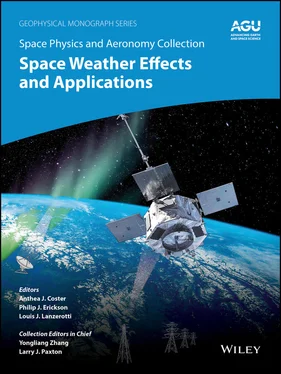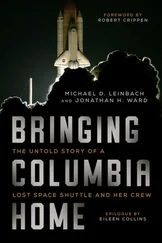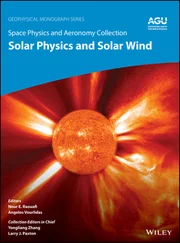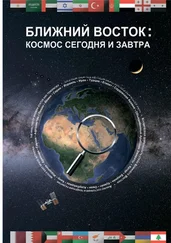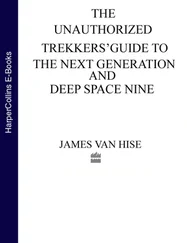Louis J. LanzerottiNew Jersey Institute of Technology and Alcatel Lucent Bell Laboratories New Jersey, USA (ret.)
William LilesHamSCI Community Virginia, USA
Christopher J. MertensSpace Radiation Group NASA Langley Research Center Hampton, Virginia, USA
Cathryn MitchellDepartment of Electronic and Electrical Engineering University of Bath Bath, UK
Marcin D. PilinskiLaboratory for Atmospheric and Space Physics University of Colorado at Boulder Boulder, Colorado, USA
William RadaskyMetatech Corporation Goleta, California, USA
Eric K. SuttonSpace Weather Technology, Research, and Education Center University of Colorado at Boulder Boulder, Colorado, USA
Jeffrey P. ThayerAnn and H. J. Smead Aerospace Engineering Sciences Department University of Colorado at Boulder Boulder, Colorado, USA
W. Kent TobiskaSpace Environment Technologies Pacific Palisades, California, USA
Lawrence W. TownsendDepartment of Nuclear Engineering The University of Tennessee Knoxville, Tennessee, USA
Endawoke YizengawSpace Science Application Laboratory The Aerospace Corporation El Segundo, California, USA
Since the advent of the electrical telegraph about 170 years ago, human technologies have greatly expanded in type and in purpose for civilian, commercial, and national security uses. These include electrical grids, pipelines, radar, wireless signaling, navigation, flying spacecraft, and telephony: technologies that cross continents, oceans, and now space. Regardless of specific application, successful operational use of these technologies has determined that compelling needs exist to take into account Sun and Earth space phenomena and processes in both design and implementation. Increasingly sophisticated technical systems require increasingly detailed understanding of solar and terrestrial space phenomena. Achieving this detailed understanding has been aided by the access to space provided by reliable launch vehicles, and by ever more sophisticated instrumentation deployed to measure Earth’s space environment. The data acquired can be incorporated into ever better models to describe and even forecast the environment and its changes. This volume contains nine chapters, written by experts, describing current‐day technologies and how solar and terrestrial space processes can affect them. Without these technologies, contemporary life in civil, commercial, and national security realms would be very different, and arguably impossible. One chapter in this volume outlines a number of issues related to human survival in the space radiation environment inside and outside Earth’s magnetosphere. An epilogue closes by looking to the future in this broad area of applied geophysics. As the historical record demonstrates, despite specific qualities such as form and function, there is a high likelihood that some electrical technologies yet to be implemented or invented will always require design features whose goals are to ensure successful operations under all levels of solar and terrestrial conditions. The study of these environmental conditions in both basic and applied form will thus remain essential for the future.
Anthea J. Coster Haystack Observatory Massachusetts Institute of Technology Westford, Massachusetts, USA
Philip J. Erickson Haystack Observatory Massachusetts Institute of Technology Westford, Massachusetts, USA
Louis J. Lanzerotti New Jersey Institute of Technology and Alcatel Lucent Bell Laboratories New Jersey, USA (ret.)
Introduction: Space Weather Underlies Reliable Technologies
Louis J. Lanzerotti1, Philip J. Erickson2, and Anthea J. Coster2
1 New Jersey Institute of Technology and Alcatel Lucent Bell Laboratories, New Jersey, USA (ret.)
1 Haystack Observatory, Massachusetts Institute of Technology, Westford, Massachusetts, USA
Descriptions and understandings of the space environment around Earth have grown exponentially over the centuries since William Gilbert described the Earth as a “great magnet” in his classic book De Magnete (1600). Gilbert used a model Earth, called a terrella, in his work, and studied several aspects of what can be called “electricity,” including static electricity using amber because of its attractive properties. The invention of the telescope concept by Hans Lippershey and the use of the telescope by Galileo Galilei for astronomical (and thus space environment) purposes (including studies of the Moon and Jupiter’s four major moons) occurred in the decade following the publication of De Magnete .
Initial use of electrical phenomena for practical purposes by humans can perhaps be attributed to the development of the lightning rod in about 1749 by Benjamin Franklin, and of the telegraph system patented in 1837 by Samuel F. B. Morris. The telegraph system revolutionized long‐distance communications for personal, commercial, and military purposes. The long grounded wires of the first telegraph systems in the eastern United States and in western and southern Europe formed the detector arrays that first gave evidence of the coupling of Earth’s space environment to human technologies. The engineering superintendent of the Midland Railway Company, William Henry Barlow, first documented “spontaneous” currents in the electrical circuits of railway telegraph systems (Barlow, 1849). His data, purposefully taken over a two‐week period to study the subject, showed clear diurnal variations in the electrical currents. Barlow also wrote that “in every case which has come under my observation, the telegraph needles have been deflected whenever aurora has been visible.”
The large geomagnetic storm that occurred following the discovery by amateur solar astronomer Richard Carrington of the first white light solar flare on 1 September 1859, caused havoc in the telegraph systems of Europe and the U.S. (Prescott, 1866). One example of the havoc of this singular “Carrington event” was that for lengthy intervals the telegraph between Boston and Portland, Maine, could be operated solely on the basis of the “spontaneous” electrical currents flowing in the wires; batteries were not needed at each end of the telegraph line to send messages. Disruptions of telegraphic communications occurred in systems in the U.S. and Europe throughout the extensive geomagnetic storm interval of 1–2 September 1859.
It seemed clear that there was some type of significant coupling between Sun and Earth (including the generation of aurora) and the telegraph systems. But no authorities had any insight of what such couplings might be. Debate waged in the scientific and engineering literatures for several decades in the late 19th century. Indeed, an authority with the eminence of Lord Kelvin (William Thomson), whose analysis work was key in the implementation of the first trans‐Atlantic cable, argued in his presidential address to the Royal Society in 1892 that such Sun–Earth coupling was not physically possible (Kelvin, 1892).
Since the days of the advent of the electrical telegraph about 170 years ago, human technologies have greatly expanded in type and in purpose for civilian, commercial, and national security uses. Many of these important contemporary technology developments are illustrated in the figure. These depicted elements, relied on heavily by current society, must by necessity take into account phenomena and processes in Sun and near‐Earth space for their design, implementation, and ultimate successful operations. Since the time of the telegraph, several additional technologies have developed that use long conductors and are therefore susceptible to induced ground currents. These include electrical grids, pipelines, and telephony, both continental and transoceanic.
Читать дальше
